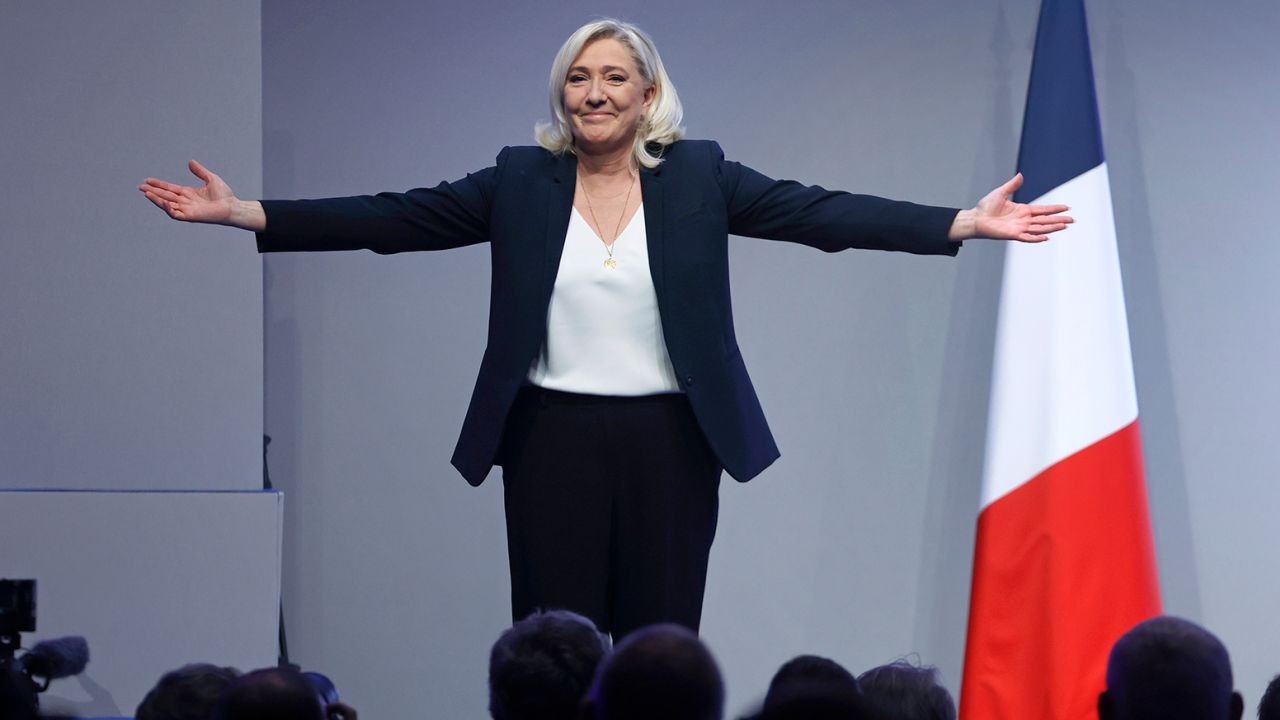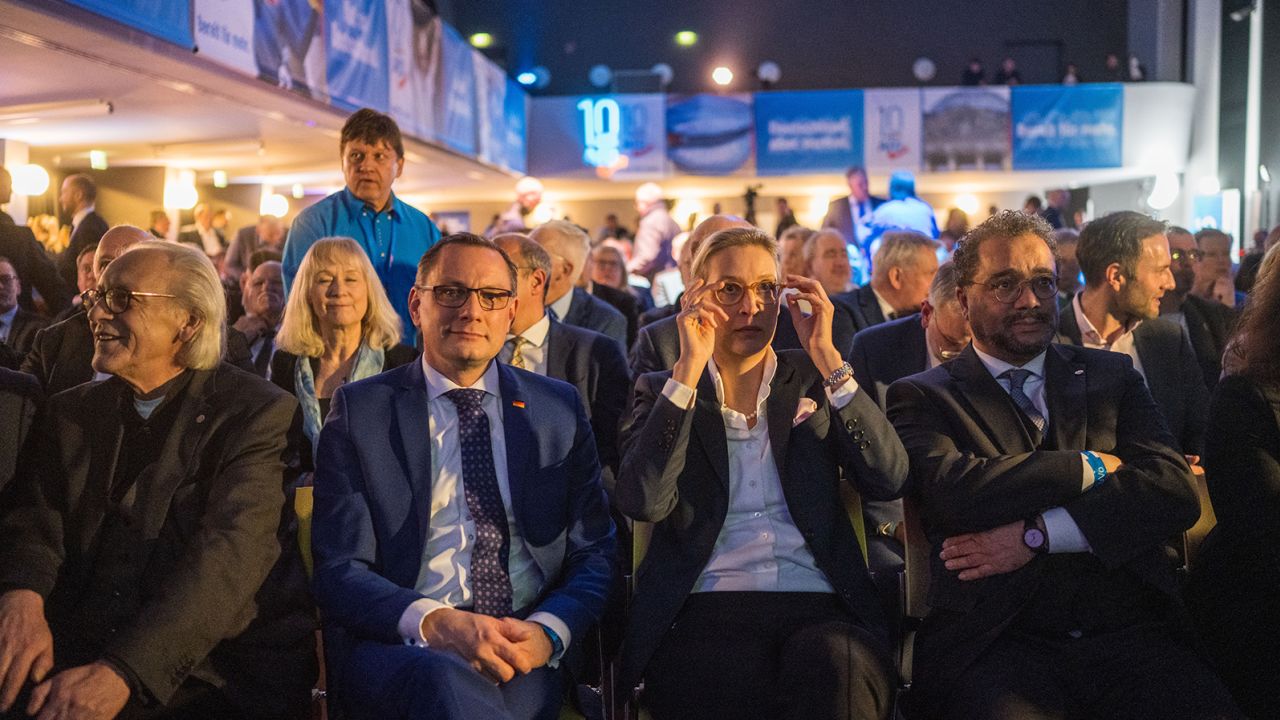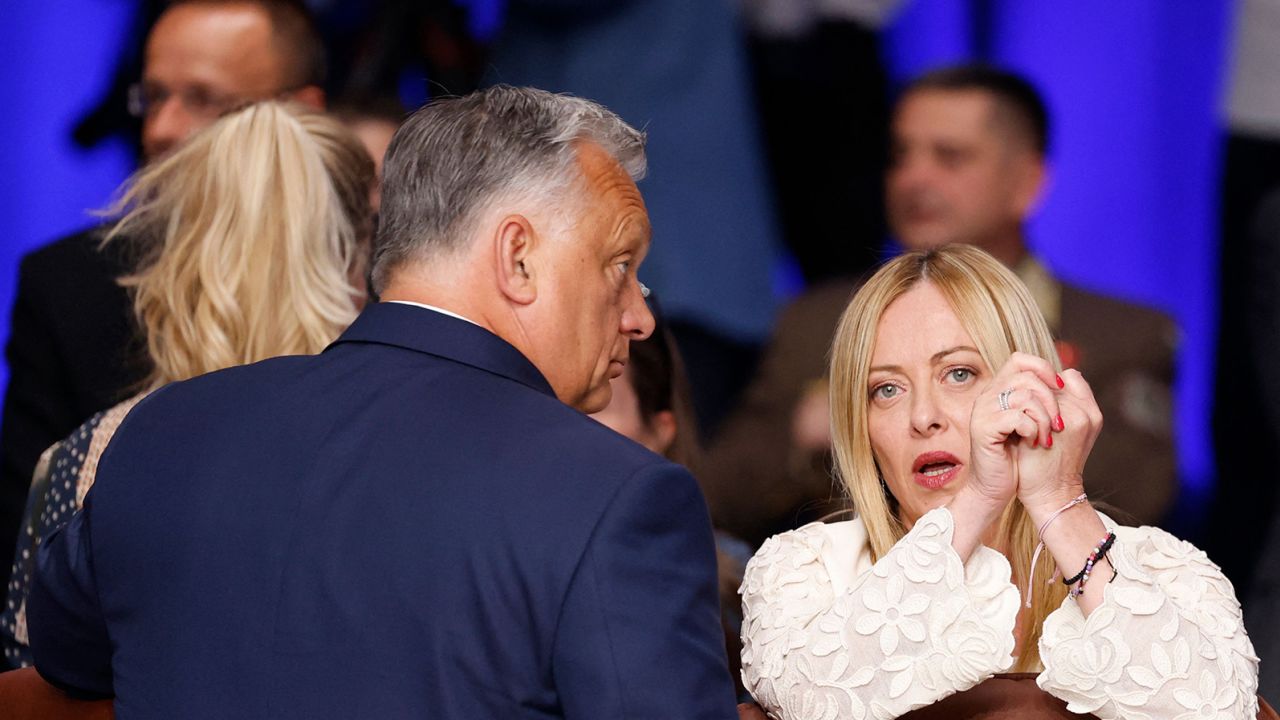CNN
—
While the Anglosphere was wracked by a burst of populism in 2016, most European countries proved remarkably resilient. Long-held grievances in the United Kingdom and United States fueled Brexit and took Donald Trump to the White House, but Europe – seeming at times to look aghast across the Channel and Atlantic – appeared largely immune. Brussels had fretted about a “Brexit domino effect.” In reality, the opposite came to be.
In the five years from 2016, French centrism spurted out a new political party led by Emmanuel Macron that quelled the National Front. Angela Merkel’s resignation passed without populist fanfare and delivered a moderate successor. Mario Draghi, the technocrat par excellence, slid seamlessly from the European Central Bank to Italy’s premiership. Spain even went left.
There were outliers: Jaroslaw Kaczynski in Poland and Viktor Orban in Hungary continued to shape their nations in their populist parties’ image. The far-right Alternative for Germany (AfD) surged to third place in the 2017 federal elections. The billionaire tycoon Andrej Babis gained power that same year – but told CNN at the time he was more like the Czech Michael Bloomberg than the Czech Donald Trump. The story of that period was the so-called populist “wave” cresting early, and not sweeping much away. Voters in European nations largely toed the line.
Today, there is not that same cohesion. The far right is on the march across the continent. Italy’s government under Giorgia Meloni is further to the right than at any point since the rule of Mussolini. The AfD recently won a district council election for the first time, with more victories expected to follow. In France, the perma-threat of a Marine Le Pen presidency grows with every protest against Macron’s government, whether over police violence or pension reform. Far-right parties are propping up coalitions in Finland and Sweden. Neo-Nazi groups are growing in Austria.
And in Spain, the center-left coalition looks set to crumble after elections this weekend, paving the way for the far-right Vox party to enter government for the first time as part of a coalition.
Why did Europe largely avoid the sort of populism that took root in the US and UK in 2016? And why are populist parties now steadily marching into the mainstream across the continent?
It is often said that majoritarian electoral systems – as in the US and UK – help to shut extreme views out, while proportional systems – more common in Europe – welcome them in. Proportional systems give a louder legislative voice to parties like the AfD and Vox; winner-takes-all systems keep them quiet.
For example, the UK Independence Party (UKIP), despite winning more than 12% of the vote, secured only one seat in Parliament in the 2015 general election. Thanks to the UK’s first-past-the-post system, while there was significant support for UKIP’s anti-European Union, anti-immigration platform, it was not concentrated enough in any single constituency to deliver many seats. Nigel Farage, the former leader of UKIP, ran in seven elections but never won a seat – a supposed benefit of majoritarian systems.
But it’s not that simple. Afraid of losing voters to UKIP (and other far-right parties), the governing Conservatives ended up adopting many of its positions. First, holding a referendum on Brexit – then pursuing a hardline form of it. Middle-of-the-road Conservatives found they had to make room in their party for more extreme views, or face losing electoral ground to parties that championed them. The system that was meant to shut extremists out of the building ended up welcoming in their ideas. Farage saw many of his policies implemented without having to win a seat.
By contrast, despite often having extremist parties in the building, almost all mainstream European parties would simply refuse to consider them as potential coalition partners, under the principle of the “cordon sanitaire.” For instance, when the then-National Front leader Jean-Marie Le Pen (father of Marine) unexpectedly defeated the Socialist candidate Lionel Jospin in the 2002 French Presidential election, the Socialists swung their weight behind the center-right candidate Jacques Chirac, delivering him a landslide in the second-round runoff. Despite their ideological differences, the mainstream parties simply refused to cooperate with extremists.
Now, that dynamic has been reversed. Extremist parties that were once excluded from governing coalitions are increasingly propping them up, and the membrane separating the far and center right is proving increasingly permeable.
In Finland, Petteri Orpo – largely seen as dependable and level-headed – only replaced Sanna Marin as Prime Minister in April after allying with the nationalist Finns Party. The party’s Vilhelm Junnila lasted barely a month as finance minister before resigning after allegations he had joked about Nazism at a far-right event in 2019. Swedish Prime Minister Ulif Kristersson relies on the votes of the increasingly Euroskeptic, anti-immigrant Sweden Democrats.
One peculiar feature of this new dynamic is how the far right and center right increasingly use each other’s language. Mainstream center-right parties, fearful of losing votes to more extreme groups, have increasingly begun to adopt their policies. In the Netherlands, Mark Rutte’s run as the second-longest serving leader in Europe ended this month after his new, hardline stance on asylum seekers proved too extreme for his more moderate coalition partners, causing his government to collapse.

Conversely, far-right parties have attempted to sanitize some of their rhetoric, hoping to appear a more credible electoral prospect. After the fatal police shooting of an unarmed teenager, which sparked huge protests in France, Marine Le Pen’s response was markedly restrained.
Philippe Marlier, a professor of French politics at University College London, told CNN that rather than seizing on traditional far-right rallying calls of “riots, ethnic minorities, rebelling against public authorities,” Le Pen’s “low-key” response was tempered “to appeal to a much broader audience than typical far-right voters.” This is part of a “long-term strategy of coming across no longer as a far-right politician, but as someone who eventually – in four years’ time – could be seen as a credible replacement for Macron.”
Italy’s Meloni provided the model for this. When Lega leader Matteo Salvini, a long-term admirer of Vladimir Putin, planned a trip to visit the Russian President in June last year, Meloni took the opposite stance, restating her support for Ukraine and pledging to uphold sanctions against Russia if she was elected, as she then was in September. Using more moderate rhetoric is reaping electoral success for far-right politicians across the continent.
Similarly, Germany’s AfD has begun to speak more seriously about economic policy, echoing traditional conservative values of fiscal prudence. While its flirtation with anti-vax politics may have cost it votes in the 2021 election, it has since enjoyed success in the east of the country, arguing that the government’s commitment to climate policies and supporting Ukraine’s war effort are placing overly burdensome costs on the German taxpayer. These moves suggest far-right parties, while not abandoning their extremist positions, are learning to speak the language of the mainstream to great effect.


All this is to say that the “supply side” of populism warrants as much attention as its “demand side.” It matters not just what voters want to buy, but what – and how – parties are selling. A bottom-up theory of populism suggests that dramatic shifts in public opinion create irresistible “waves” of support that mainstream parties are unable to resist. But, as the American political scientist Larry Bartels points out, there is also a top-down theory: Rather than an unexpected “wave,” there has long been a “reservoir” of populist sentiment in Europe. What matters is how politicians draw on it.
The “demand side” often attributes the rise of populism to economic grievances and a cultural backlash. Financial crises, like that of 2008-2009, or big social shifts, like the European migrant crisis of 2015, are said to provide fertile ground for the seeds of populism to take root. Often the two factors can complement each other: The AfD, for instance, was founded during the Eurozone crisis in opposition to the common currency, but gained more support after adopting anti-Islamic policies following Germany’s welcoming of migrants mostly from the Middle East.
The early 2020s, then, may seem to provide ground more fertile than the previous decade for these sorts of sentiments to grow. The continent has seen the return of inflation and the soaring cost of living; the end of quantitative easing and rising interest rates; increased tax burdens as government balance sheets recover from the Covid-19 pandemic and look to fund net-zero policies and increased defense spending. Recent opinion polls show the issue of immigration is also increasing in salience, as migrants continue to turn up on Europe’s shores.
And yet, recent Eurobarometer polling shows that the public’s perception of the European economy is less bleak than we might expect – and far better than during previous crises. Negative perceptions of Europe’s economy rocketed after the financial crisis, and rose again after the start of the pandemic, but are now net positive. Similarly, trust in the European Union has been on an upward trend since 2015, and trust in national governments has remained broadly constant, but improved since the financial crisis.

And so the recent successes of far-right parties cannot be explained by dramatic shifts in public opinion. Europe has weathered financial and migrant crises before, which did not translate into widespread support for populism.
Instead, what we are seeing is a different sort of populism to the one that wracked the US and UK in 2016: A populism fueled by the collapse of the cordon sanitaire between mainstream conservatives and the far right, and one which may have learned the lessons of its short-lived predecessors.
The defenestration of Boris Johnson and legal travails of Donald Trump perhaps offered the comforting conclusion that populism will inevitably implode: Its policy failures will be too great, the personal foibles of its leaders too unbearable, crass – and potentially criminal.
But, on the continent, there is a newer, smarter brand of populism taking root. Whereas the UK has been content to break international law in pursuit of Brexit and its crackdown on asylum seekers, populist leaders in Europe are taking greater care not to renege on their international commitments. Many are content to wage culture wars at home, while remaining reliable partners abroad.

Orban, then Kaczynski, provided the model for this. Meloni, since, has taken quickly to the craft: Remaining responsible on the continental stage while coldly implementing far-right policies on the domestic one. This weekend, Spain may also set out on this path. After Rutte’s resignation, the Netherlands may too.
A lot depends on the ability of mainstream parties – particularly on the left – to build tents big enough to accommodate their differences, rather than compromising with far-right parties to prop up their coalitions. Spain’s Prime Minister Pedro Sanchez has managed this since 2018, though with dwindling success. His ability – or otherwise – to do so again this weekend may serve as a harbinger of the continent’s future.
Sumber: www.cnn.com






